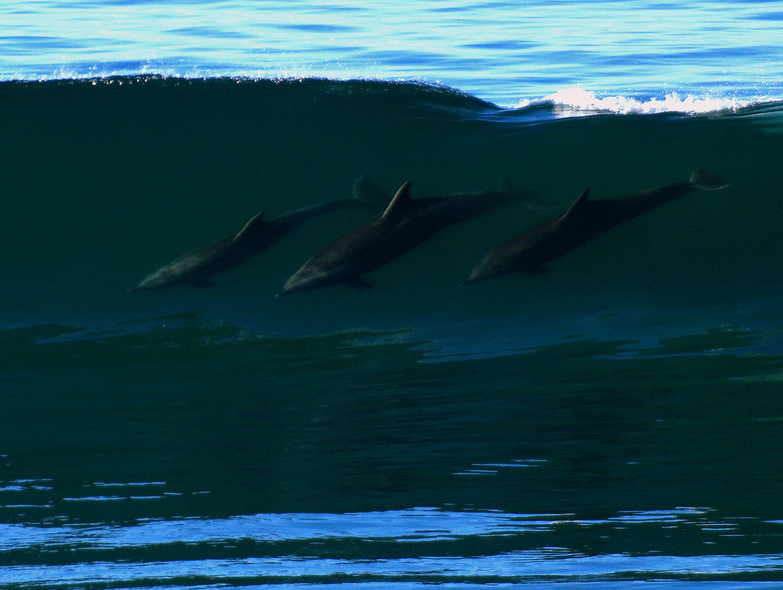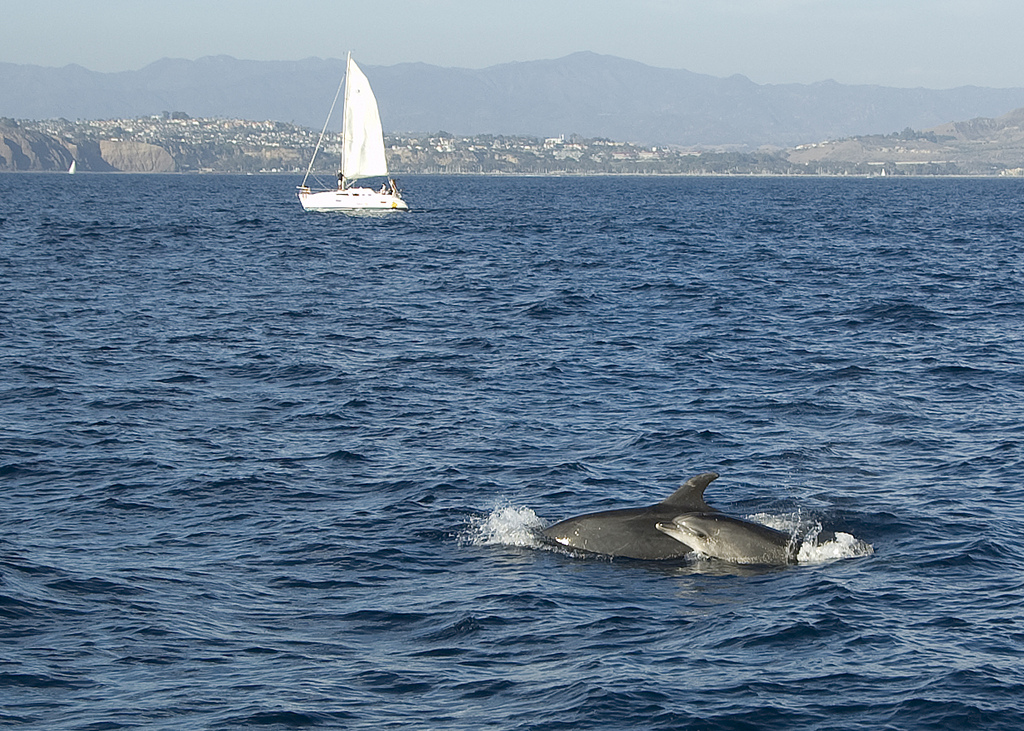Podcast: Play in new window
BOB HIRSHON (host):
Urban dolphins. I’m Bob Hirshon and this is Science Update.

In California, surfers share the water with coastal bottlenose dolphins, which rarely
venture more than 1000 meters from shore. Just 500 in number, these nomadic
cetaceans chase their prey all the way from southern Baja to San Francisco Bay.
According to marine mammal biologist Dave Weller of the Southwest Fisheries
Science Center, their proximity to urban areas exposes the dolphins to chemical
runoff.
DAVE WELLER (Southwest Fisheries Science Center, NOAA):
The dolphins are very contaminated, they’ve got some of the highest levels of
DDT and PCBs of any marine mammal that we’ve observed.
HIRSHON:
Weller says so far, the dolphins appear surprisingly resilient. But the toxins build
up in their blubber over time.
WELLER:
So, despite the fact they seem healthy, they may be compromised, and we may not be
aware of that till some environmental change happens.
HIRSHON:
Because its small size, he says the population could be especially vulnerable to the
effects of climate change, disease, or oil spills. I’m Bob Hirshon, for AAAS, the
science society.

